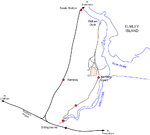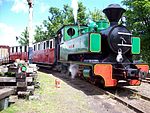Church of All Saints, Murston

The Church of All Saints, Murston, Sittingbourne, is an Anglican parish church in the county of Kent, England. It is notable due to its architect, William Burges, and was constructed in 1873–4. The church was built in "an early Gothic Style" and incorporates fragments of the original 12th-century church. The estimate was £3,000 but the public subscription raised only £2,000. As a consequence, the intended tower was truncated. It is a Grade II listed building as of 13 December 1974.The church is the base for the Murston Community Bank, an initiative undertaken by the Diocese of Canterbury in conjunction with the Kent Savers Credit Union. Church services are not undertaken at All Saints.
Excerpt from the Wikipedia article Church of All Saints, Murston (License: CC BY-SA 3.0, Authors, Images).Church of All Saints, Murston
Church Road, Borough of Swale Murston
Geographical coordinates (GPS) Address External links Nearby Places Show on map
Geographical coordinates (GPS)
| Latitude | Longitude |
|---|---|
| N 51.34245 ° | E 0.7531 ° |
Address
All Saints
Church Road
ME10 3NT Borough of Swale, Murston
England, United Kingdom
Open on Google Maps







